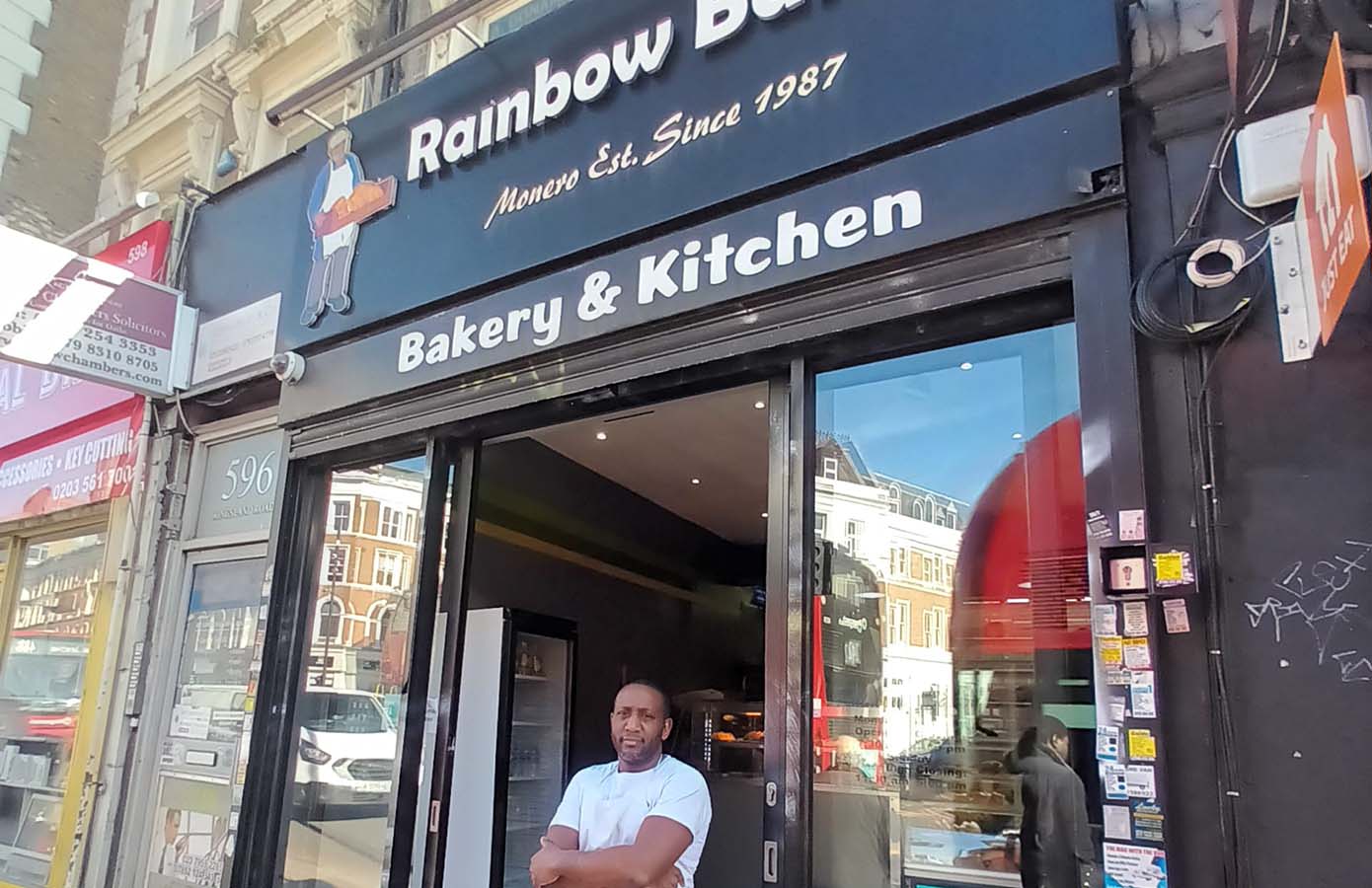
Inside London’s only St. Lucian bakery
BY LISETTE FELIX
Julius Monero is rushing his two young children out of the family’s Rainbow Bakery, in Dalston High Street as I arrive at the end of another busy day. It is almost time to get them to bed, he says wearily as he turns his attention to me. But, Monero is used to juggling life with the business his family has owned since 1987.
“Your work ethic is key, you must be prepared to work. There is a lot of manual labour to be done, unfortunately many of our younger people assume that all they have to do to make it work is tap on a laptop, and you’ll make some money but food is very much something you get into because you have a passion.”
Started by Julius’s parents, Byron Monero and Maria Polina, a St. Lucian couple who immigrated to the UK from the island nation in 1962, he has run the bakery for the last 20-plus years. His two nephews Daniel and Keo, who hope to take over the business one day, work with him together with other family members who help out when they can. He currently has a staff of seven.
The bakery itself is small, reminiscent of many shops in the Caribbean. Painted in a dark grey with striped yellow and green walls, there are well-lit display cases stacked everyday with an array of mouthwatering cakes of all shapes and sizes, including sponge and rum (the latter usually referred to as Black Cake by other Caribbean islanders), coconut drops and other confectionery. Also stocked are well known drinks like Sorrel or Mauby. A popular local spot, on most days the shelves are usually empty by closing time.
Monero prides himself with having a St Lucian twist to his offerings. “What we found in terms of Caribbean food is that…we use the same type of base product, but we might take away or add more of a particular ingredient to give it a slightly different taste, and of course we have different names for the same foods.”
For instance, when it comes to what St. Lucian’s call bakes, a fried dumpling that can be served with fish, Dominicans call them Johnny cakes. Then there is green fig or green banana salad which is made for St Lucia’s national day. In the Eastern Caribbean island, saltfish is served with fried dumplings as opposed to the Jamaican way of preparing it with ackee.
Monero, who was trained by his father, was eager to take over the business after he retired, understanding the importance of the legacy that he would be continuing and appreciating the easier path he has had.
“My father had more challenges than me, the barriers to my success have not been as great as they were when my father was coming up. It’s the way we’ve been brought up; you are used to things being pretty difficult, so you keep fighting for it. I can get financing, but a lot of people who do not look like me may get things easier, but I am grateful for the fact that I can get it,” he said.
Since he took over in 2002 after earning an economics degree from City University, Monero has set about exploring new directions for the bakery. Changes include offering savory food – chicken, beef, lamb and veggie patties, along with, traditional St Lucian flavors – saltfish and callaloo. There is also a ‘meal of the day’ and or sometimes two, such as jerk chicken or oxtail soup. Along with the drinks mentioned above, there’s sea-moss [Irish moss], which is usually made with condensed milk, honey, cinnamon, nut neg and a fruit syrup. The one sold here is made with crushed pineapple, not milk and is delicious.
Monero sees expansion in the future, but that will come in time, he says.. “The goal is to keep the bakery progressing and growing, embracing innovative ideas, and not selling just cakes. But for now, I want to continue it as a legacy for my family and not really as a global concern.”
Go inside here:
Inside London’s only St. Lucian bakery
Enter the world of African gastronomy with Chishuru, a culinary gem that tantalizes taste buds and showcases the diversity of flavors embedded in the continent’s rich food culture. Originating from Nigeria, Chishuru represents a fusion of traditional ingredients and contemporary flair, making it a standout in the global culinary scene.
At its essence, Chishuru is a celebration of fresh, seasonal produce, often featuring a vibrant medley of vegetables such as leafy greens, tomatoes, and okra. The dish is elevated with a harmonious blend of spices, reflecting the depth and complexity that characterize African cuisine.
One of Chishuru’s distinctive qualities is its versatility. Whether served as a vegan delight or accompanied by succulent meats, the dish adapts to various preferences and dietary choices. The result is a symphony of flavors that captivates diners and introduces them to the authentic tastes of Africa.
Chishuru’s journey from local tradition to international recognition mirrors the global appreciation for diverse and bold culinary experiences. As food enthusiasts seek new and exciting flavors, Chishuru takes its place as a flavorful ambassador, inviting everyone to savor the richness and complexity of African cuisine. In a world that celebrates culinary diversity, Chishuru stands out as a testament to the incredible tapestry of flavors waiting to be explored and enjoyed.








